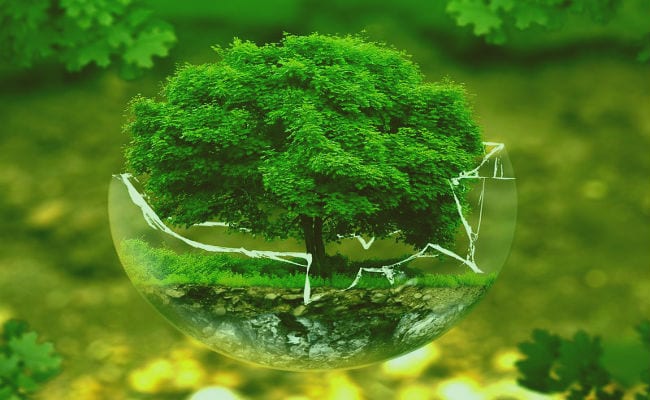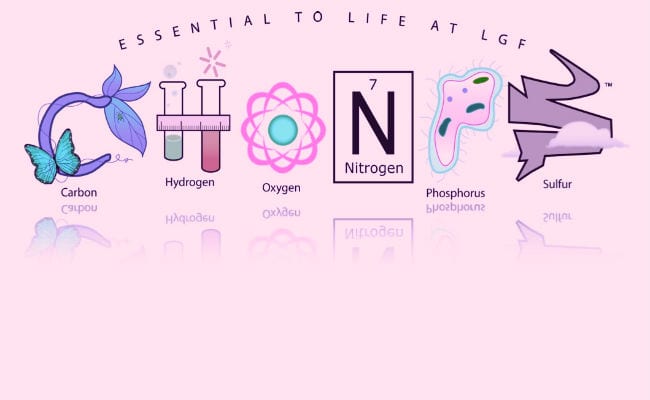Life on the planet is determined by a set of relationships in which there is an extraordinary flow of information and a continuous exchange of matter and energy. Matter is everything that has mass and occupies a place in space, it is made up of atoms, which are the minimum units that constitute it. Living beings, water, stars, everything that surrounds us is made up of atoms.
The diversity of chemical elements is given by the variety of types of atoms. Each type of atom constitutes a different chemical element. Currently 105 chemical elements are known, of which 84 are found naturally and the rest have been artificially produced in laboratories.
As we said, nature is made up of matter, and all living matter is therefore also made up of matter, which in turn is made up of atoms and these make up elements. The elements that make up living matter are known by the name of Bioelements, these in turn are classified according to whether or not they are essential for life into: Primary bioelements and secondary bioelements
Essential elements for life
Primary Bioelements are those essential chemical elements, present in living matter, in cells, tissues, organs and systems that make them up from the simplest to the most complex. As we said before, all matter, in general, whether alive or not, is made up of atoms, and everything that is made up of only one type of atoms is known as an element, the elements, known until now, are 105.
In the constitution of living matter we can find at least 70 stable chemical elements, practically all the elements that exist on the planet, minus the noble gases. About ninety-nine percent (99%) of all existing living matter, mostly, its cells are made up of these six elements: Carbon (C), hydrogen (H2), oxygen (O2), Nitrogen (N2); Phosphorus (P) and Sulfur (S) which are the most abundant in the matter alive that we find on the earth's surface. They are called bioelements because they form an essential part of the basic or primary constitution of living beings.
Types of bioelements
According to whether or not they form part of the essential constitution of the biomolecules of living matter, Bioelements can be classified into: primary bioelements and secondary bioelements.
Primary Bioelements
They are all those bioelements that are part of the essential constitution of living matter, since they are an indispensable part in the formation of organic biomolecules: proteins, carbohydrates, lipids, and nucleic acids. They constitute the net living matter and are: Carbon (C), hydrogen (H2), oxygen (O2), Nitrogen (N2); Phosphorus (P) and Sulfur (S).
Carbon (C)
Es the essential basic component of all organic molecules, appears in all chains as the skeleton that gives form and function to organic biomolecules. All organic compounds are made up of carbon chains that form bonds with other elements or compounds.
It has four electrons in its outermost shell and can form covalent bonds with other carbons that allow it to form long chains of atoms (macromolecules). These bonds can be single, double or triple. They can also bind to the different radicals formed by the elements (-H, = O, -OH, -NH2, -SH, H2PO4) among others, so that it enables the formation of a large number of different molecules, which will intervene in a multiplicity of chemical reactions, and thus takes advantage of the diversity present in the environment.
Carbon is an essential component for animals and plants. It is an essential part of the glucose molecule, an important carbohydrate for carrying out processes such as respiration; also intervenes in photosynthesis, in the form of CO2 (carbon dioxide).
Carbon is also part of another macromolecule essential for life, that of DNA, this molecule contains the genetic information that confers on each individual the characteristics that it does not own, and which in turn is used by the body to replicate and transmit that information to their descendants
Hydrogen
Hydrogen, together with oxygen, is an essential part of organic matter. In the case of some lipids, they only exhibit carbon and hydrogen atoms in their constitution. The electron ion that has the hydrogen atom in its last layer, allows you to easily establish bonds with any of the primary bioelements.
The covalent bond that forms between carbon and hydrogen is strong enough to be stable, but not strong enough to prevent it from separating and thus allow the synthesis of other molecules. The molecules formed, only by hydrogen and carbon, are covalent to polar (insoluble in water).
The Oxigen
Oxygen is the most electronegative of all the primary Bioelements, and when it joins with hydrogen, it attracts its only electron, originating electric poles, so the radicals -OH, -CHO, and COOH are polar radicals. When these radicals replace some hydrogens of the carbon chain and hydrogens such as glucose (C6H12O6) give rise to molecules like water that are soluble in polar liquids.
Oxygen, due to its electronegativity, has the ability to attract electrons from other atoms. This process necessarily involves the breaking of bonds and the release of large amounts of energy. Carbon and oxygen compounds react with what it is known as aerobic respiration, and it is a common way of obtaining energy. Another way to obtain energy is fermentation, this has been reduced since algae and plants, through photosynthesis, began to produce oxygen for the primitive atmosphere.
The oxidation process of biological compounds is carried out through the subtraction of hydrogen atoms from carbon atoms. Oxygen, being more electronegative, exerts a greater force on the hydrogen electron than on the carbon electron, so it is able to start it off.
Thus water is formed, with hydrogen plus oxygen and a large amount of energy is released that living beings take advantage of. As the carbon atom begins to share an electron with hydrogen, by sharing fewer electrons with oxygen, it experiences a loss of electrons, that is, it oxidizes.
Nitrogen
Nitrogen is an element that is about 78% part of the atmosphere. It is also an essential component of deoxyribonucleic acid (DNA) proteins, responsible for transmitting hereditary characters from parents to children. DNA is present in all cells of the body, hence the importance of nitrogen for living beings.
In general, nitrogen cannot be absorbed directly, but as part of other compounds such as nitrates, nitrites or ammonium compounds that contain it. Before being used by living beings, nitrogen needs to go through several stages:
- Ammonification, a process by which nitrogen is transformed into ammonia.
- Nitrification that consists of transforming ammonia into nitrites and nitrates.
- The fixation process through which nitrogen passes through several processes to become nitrite or nitrate, both substances that can be used by living beings
Nitrogen is found in amino acids, that is, in the molecules that make up proteins, forming amino groups (-NH2) and in the nitrogenous bases of nucleic acids. Nitrogen is the most abundant gas in the atmosphereDespite this, very few organisms are able to take advantage of it. Almost all of the nitrogen incorporated into living matter by algae and plants is absorbed in the form of nitrate ion (NH3).
Nitrogen is very easy to form compounds with both hydrogen (NH3) as with oxygen (NO-), which allows it to pass from one form to the other, thus releasing energy.
Sulfur As a component of protein essential amino acids, vitamins and important hormones, sulfur is essential for both humans and animals.
Sulfur represents 0.25% of the weight of our body, this means that an average adult body contains about 170g of sulfur, much of this is found in amino acids. Sulfur is part of the bile acids, essential for digestion and fat absorption. Helps maintain healthy skin, hair and nails and it has a fundamental role in tissue formation. Sulfur is generally present in vegetables such as radish, carrots, milk products, cheese, seafood, and meat.
The match
The amount of phosphorus present in the atmosphere is negligible. The largest reserve of phosphorus is found in marine sediments. Soils constitute, in order of importance nature's second storehouse of phosphorus. We can also find it in the earth's crust as a component of various minerals due to the effect of chemical weathering, phosphates are released from the mineral, it dissolves and is transported by water.
A part of the phosphate precipitates, mainly in the form of calcium phosphate, and another part reaches the seas, where large amounts of phosphorus accumulate, constituting the so-called phosphorus traps.
Phosphorus in the form of organic phosphate, is extremely important for living matter since:
- It is one of the components of nucleic acids (RNA and DNA, which constitute the genetic material of organisms
- It is found as a component of adenosine triphosphate, which is an almost universal cellular energy source in living matter.
- It is one of the components of bones.

